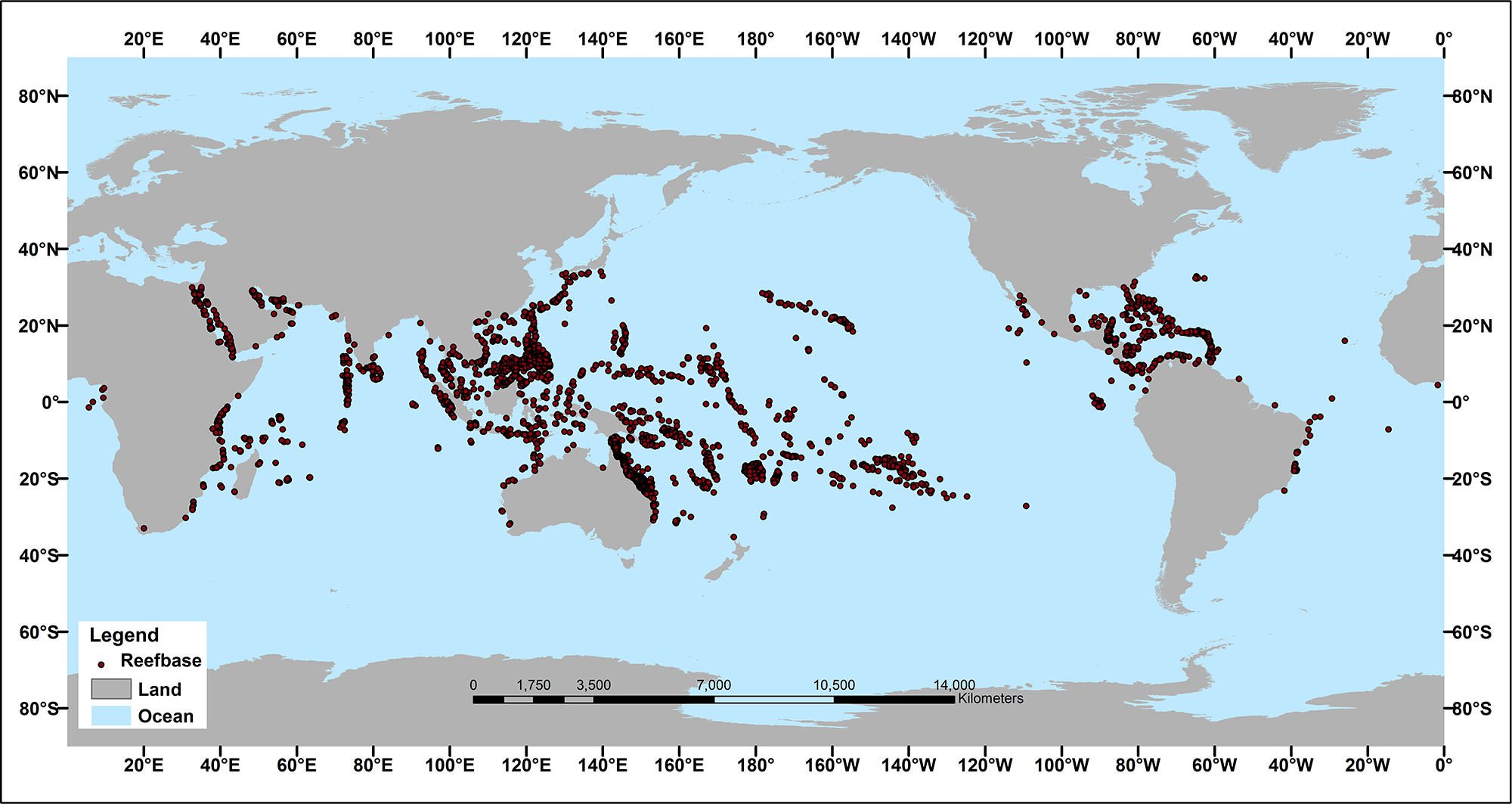Enhancing Coral Ecosystems:
The Role of Artificial Reefs
 |
Hari Srinivas |
|
Case Study Series C-067.
|
Abstract:
Coral reefs, among the most diverse and valuable ecosystems in the world, face mounting threats from overfishing, pollution, and climate change. As these pressures intensify, artificial reefs have emerged as a promising solution to support reef restoration and marine biodiversity. This case study examines the ecological importance of coral reefs and the role of artificial reefs in enhancing marine ecosystems. It outlines the various types of artificial reefs, their construction materials, regional applications, and their effectiveness in mimicking natural reef functions. With examples from Japan and other countries, the study emphasizes how artificial reefs contribute to habitat expansion, biodiversity conservation, and increased ecosystem resilience. As climate impacts and human pressures grow, artificial reefs offer a practical and strategic tool for safeguarding coral environments.
Keywords
Coral Reefs, Artificial Reefs, Marine Ecosystems, Biodiversity Conservation, Habitat Restoration, Coastal Protection, Climate Change Adaptation, Sustainable Fisheries
|
|
In the delicate balance of marine ecosystems, coral reefs stand out as vibrant hubs of biodiversity, supporting a myriad of marine life forms.
|
In the intricate web of marine ecosystems, coral reefs stand out as some of the most productive and biologically diverse environments on the planet. Often referred to as the "rainforests of the sea," these complex structures provide essential habitat for countless marine species, while also delivering critical services such as coastal protection, food security, and economic support through tourism and fisheries.
Yet, these vibrant ecosystems are increasingly under threat from human activities and climate change, leading to significant degradation worldwide. In response, scientists and policymakers are exploring innovative approaches to protect and restore reef habitats. One such approach is the creation and deployment of artificial reefs - engineered structures designed to mimic natural reef functions and support marine biodiversity. This case study explores the growing role of artificial reefs in enhancing coral ecosystems, highlighting their types, global applications, and ecological benefits.
Coral reefs are underwater ecosystems made up of calcium carbonate skeletons created by colonies of coral polyps. Coral ecosystems are important for several reasons:
- Biodiversity: Coral reefs are among the most diverse ecosystems on the planet, housing thousands of marine species including fish, invertebrates, and algae, which contributes to overall ocean health.
- Coastal Protection: Reefs act as natural barriers, protecting coastal areas from erosion, storm surges, and flooding by absorbing wave energy.
- Economic Value: Coral reefs support local and global economies through tourism, fishing, and the provision of marine resources that are critical for livelihoods.
- Medical Discoveries: Many marine organisms found in coral reefs have been used in medical research and have led to the development of new medicines, including treatments for cancer, arthritis, and bacterial infections.
- Carbon and Nitrogen Cycling: Reefs play a key role in carbon and nitrogen cycling, helping to regulate ocean chemistry and contributing to the health of marine environments.

Location of coral reefs worldwide
Coral habitats worldwide, spanning tropical and subtropical regions, are vital marine ecosystems renowned for their immense biodiversity and crucial role in supporting both marine life and coastal communities.
Source: NOAA National Ocean Service |
However, these vital ecosystems face unprecedented threats from human activities, including overfishing, pollution, and climate change. To mitigate these pressures and bolster the resilience of coral communities, scientists and conservationists have turned to innovative solutions, one of which is the strategic deployment of artificial reefs.
|
Artificial reefs are human-made structures built in marine or freshwater environments to enhance, protect, or restore marine ecosystems. They are usually built in areas with featureless ocean floors to promote marine life and can also help control erosion.
|
These man-made structures, ranging from submerged ships to purpose-built concrete modules, serve as crucial tools in habitat restoration, biodiversity enhancement, and ecological research. Understanding the diverse types and functions of artificial reefs illuminates their vital role in sustaining healthy coral ecosystems and fortifying them against the challenges of the modern world.
Artificial reefs can be made from natural or man-made materials, such as
rocks, cinder blocks, wood, old tires, shipwrecks, oil and gas platforms, bridges, lighthouses, subway wagons, and army gear.
The most common type of artificial reef is a submerged shipwreck. In Japan, artificial reefs are called "tsukiiso" in shallow water and "gyosho" in deeper water. Tsukiiso reefs are used for shellfish and seaweeds, while gyosho reefs are used for finfish. The ecological structure and function of an artificial reef depends on its location, construction, and how closely it mimics a natural habitat.
Artificial reefs come in various forms, each designed to serve specific purposes and mimic natural reef structures. Here are some common types:
 |
Concrete Modules:
These are large concrete structures designed to mimic natural reefs. They provide habitat for marine life and can be deployed in various configurations. |
 |
Sunken Ships and Vehicles:
Old ships, cars, and other large structures can be intentionally sunk to create artificial reefs. These provide shelter and substrate for coral and other marine organisms to colonize. |
 |
Coral Transplant Structures:
These are frameworks or structures onto which coral fragments are attached. Once the corals grow, they enhance the reef structure and biodiversity. |
 |
Submerged Rock Piles:
Rocks or boulders can be strategically placed on the ocean floor to create habitats for marine life. |
 |
Artificial Coral Structures:
These are specifically designed structures that mimic coral formations. They can be made from materials like fiberglass or concrete and are often used to restore damaged coral reefs. |
 |
Eco-Concrete Reef Balls:
These are hollow concrete spheres or domes with holes that provide shelter for marine life. They're often used to restore degraded habitats and promote biodiversity. |
Artificial reefs are mostly located in coastal areas around the world where they can provide the most benefit to marine ecosystems and human activities. Some of the prominent regions include:
- United States: Particularly along the Gulf Coast (e.g., Florida, Texas, Alabama), the East Coast (e.g., North Carolina, South Carolina), and the West Coast (e.g., California).
- Australia: Especially around the Great Barrier Reef region and other coastal areas.
- Europe: Notably in the Mediterranean Sea (e.g., Spain, Italy, Greece) and the North Sea (e.g., the United Kingdom, Netherlands).
- Asia: Including countries like Japan, Malaysia, Thailand, and the Philippines.
- Caribbean and Central America: Locations such as the Bahamas, Belize, and Mexico are known for their artificial reef projects.
- Middle East: Coastal areas around the Persian Gulf, particularly in the United Arab Emirates and Bahrain.
These regions often have significant fishing and tourism industries that benefit from the enhancement of marine habitats provided by artificial reefs.
Artificial reefs contribute to the conservation and sustainability of coral ecosystems by expanding habitat availability, enhancing biodiversity, and supporting ecosystem resilience in the face of environmental threats. These man-made structures not only provide additional living space for marine organisms but also serve as focal points for diverse underwater communities to thrive. By offering shelter, food, and breeding grounds, artificial reefs attract a wide array of species, from colorful corals to reef fish and invertebrates, thereby enriching the biodiversity of marine habitats.
Moreover, they play a crucial role in bolstering ecosystem resilience by serving as refuges for vulnerable species and promoting the recovery of damaged reef areas. In the face of escalating anthropogenic pressures and the escalating impacts of climate change, the importance of artificial reefs in safeguarding coral ecosystems cannot be overstated.
|